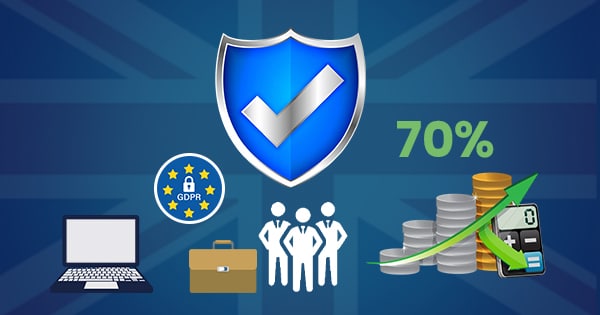
Outsource Your DPO: Cut Compliance Costs by 70%
Last Updated on October 20, 2025 by Narendra Sahoo The
Europe’s new NIS 2 Directive (EU 2022/2555) is more than a policy update — it’s a full reset of how organizations handle cybersecurity accountability. If you operate in energy, healthcare, finance, public administration, digital services, or any other sector classed as essential or important (Annex I and Annex II), you now face stricter requirements for risk management, governance, and incident reporting.
At VISTA InfoSec, we make NIS 2 compliance practical and manageable. We help you understand exactly where your organization stands, run a readiness review, and close gaps with an approach that’s structured yet flexible, never overly bureaucratic.
We can support you in many ways, whether it’s mapping controls, refining policies, running a full independent audit, or optionally getting guidance from our vCISO to help steer your cybersecurity strategy and provide ongoing advice.
Our CREST-accredited experts bring decades of experience across ISO 27001, SOC 2, and GDPR. With our integrated AuditFusion360 service, we align NIS 2 with your existing compliance work, helping you cut repetition, reduce audit fatigue, and maintain one unified strategy that actually fits your business.
Practical, hands-on support to strengthen your cybersecurity governance, update policies, build incident response and reporting procedures, and address supply chain risks in line with Directive expectations.
Independent assessment of your cybersecurity framework, controls, and processes to evaluate compliance readiness. We perform detailed gap analysis, verify risk management practices, and provide remediation recommendations to help you demonstrate conformity with NIS 2.
A detailed evaluation of implemented technical and procedural controls — including access management, encryption, network security, vulnerability management, and monitoring — in line with Article 21(2).
Analysis of identified threats, vulnerabilities, and potential impacts, with findings categorized as high, medium, or low risk to guide prioritization.
Clear identification of compliance gaps and associated risks, mapped to relevant NIS 2 Articles and Annexes, highlighting deficiencies across governance, operational, and technical areas.
A prioritized roadmap with recommended corrective actions, responsible stakeholders, and implementation timelines to achieve NIS 2 conformity.
A consolidated assessment summarizing overall compliance readiness and cybersecurity posture, integrating results from technical, risk, and governance reviews.
A concise, management-level briefing summarizing key findings, risks, and strategic recommendations for board or leadership decision-making.
Unified reporting across NIS 2, ISO 27001, SOC 2, GDPR, and DORA frameworks for simplified, multi-standard compliance oversight.


NIS2 (Directive (EU) 2022/2555) strengthens EU-wide cybersecurity by requiring essential and important entities to adopt risk-based technical, organisational, and governance measures (Articles 20–21). It ensures greater accountability, resilience, and faster incident response across critical sectors.
Entities listed in Annex I (essential) and Annex II (important)—such as energy, healthcare, finance, transport, digital infrastructure, and public administration—must comply if they operate in the EU and meet medium-enterprise thresholds or other qualifying conditions (Article 2).
Under Articles 20–21, companies need to have cybersecurity owned by the board, train their teams, and put in place practical, risk-based measures like incident response, business continuity, supply-chain security, secure development, vulnerability management, and using encryption and MFA.
NIS2 focuses on cybersecurity of IT systems and network resilience, with leadership accountability, while GDPR centers on personal data. DORA applies separately to financial ICT resilience.
Supervisory authorities can impose fines of up to €10 million or 2 % of global turnover for essential entities (and up to €7 million / 1.4 % for important ones), along with corrective actions or temporary management bans.
Identify your NIS2 scope, perform a gap analysis, update cybersecurity policies, strengthen supply-chain controls, test incident-response plans, and maintain evidence for authorities or CSIRTs.
Significant incidents must be reported promptly under Article 23 of the NIS2 Directive. Organizations are required to submit an early warning within 24 hours, followed by a detailed incident notification within 72 hours, and a final report within one month summarizing the root cause and mitigation steps.
For trust service providers, the reporting timeline is stricter — they must notify the competent authority within 24 hours of becoming aware of an incident.
Under Article 21(2)(d), entities must assess supplier cybersecurity, include security clauses in contracts, and manage third-party risks as part of their overall cybersecurity framework.
Article 21(3) further requires considering each supplier’s specific risk exposure.
Determine entity type (Annex I/II), assign board responsibility, map critical assets, assess gaps, implement Article 21 controls, document evidence, and prepare national CSIRT reporting procedures.
By enforcing governance, risk management, supply-chain oversight, and incident reporting (Articles 20–23), NIS2 harmonises cybersecurity standards, reducing systemic risk and enhancing operational resilience across the EU.

Last Updated on October 20, 2025 by Narendra Sahoo The

Last Updated on October 23, 2025 by Narendra Sahoo We

Last Updated on October 8, 2025 by Narendra Sahoo In

Last Updated on September 26, 2025 by Narendra Sahoo The
VISTA InfoSec LLC,347 Fifth Ave,
Suite 1402-526, New York, NY 10016
© Copyright 2021. VISTA InfoSec. All Rights Reserved. | Disclosure Policy | Privacy Policy | Sitemap
Enquire Now
WhatsApp us